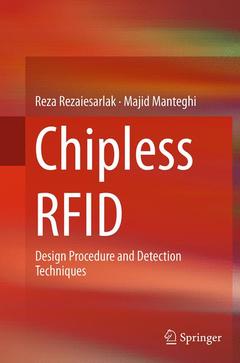Description
Chipless RFID, 2015
Design Procedure and Detection Techniques
Authors: Rezaiesarlak Reza, Manteghi Majid
Language: English
Subjects for Chipless RFID:
Approximative price 98.58 €
In Print (Delivery period: 15 days).
Add to cartPublication date: 09-2016
Support: Print on demand
Approximative price 105.49 €
In Print (Delivery period: 15 days).
Add to cartPublication date: 12-2014
159 p. · 15.5x23.5 cm · Hardback
Description
/li>Contents
/li>Biography
/li>Comment
/li>
Reza Rezaiesarlak PhD candidate at the department of electrical and computer Engineering, Virginia Tech.
Provides simulation tools and measurement setups and presents numerical and experimental results to confirm the theoretical formulations
Discusses MATLAB codes at the end of each chapter to allow the readers to simulate the results
Presents theoretical issues for detection
Includes supplementary material: sn.pub/extras




